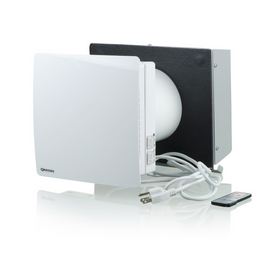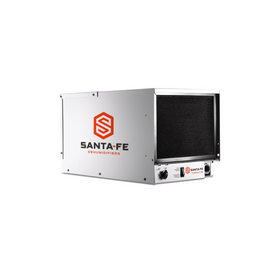
Using Permaculture Design to Analyze Your Property
Last Updated: Apr 13, 2025In our last article in this series, we looked into the critical factors of permaculture design. It’s challenging to change the position of the sun, your hardiness zone, and bioregional factors. Luckily, there are some easier to examine parts of the property.
Today, we are going to look at the ‘close to home’ factors that can affect the outcome of your property’s permaculture design.
Current Zones and Sectors
The current zones and sectors on your property are fundamental in the beginning. The zones show the present ease of access and how often your property is used. The sectors give the designer a view of the environmental factors that flow through your property and the human-centered features to consider.
Common walkways around your house will likely be considered a Zone 1. Other Zone 1 areas can include paths to and from your driveways, a shed where you store summer and winter equipment, or even a back patio. The designer will work with you to determine how you use these zones to understand how to place future zones.
The current sectors can be any area of importance but usually include a directional component tied into an elemental factor. The designer will look for things like your summer and winter sun sector (the extent of sunlight at both solstices), wind direction, and fire risk.
Your designer will look at areas where there may be a view you want to enhance or even an entire area of the property you would rather not see. Are you worried about theft? Maybe a living fence will shield your bikes from the view of people walking by or planting thorny blackberry bush along that opening to the unlit alley could deter easy access to your yard. Nature has plenty of solutions to our common problems.
Table of Contents
- On-site plants (and microclimates)
- Soil (and composting)
- Site Progression
- Final Permaculture Design

On-site plants (and microclimates)
The plants that go into a design are just as important as the features you put into your home. The permaculture designer will work with you in growing out every corner of your yard and filling in locations appropriately.
The placement of food-producing plants in comparison to support varieties is a balance that takes time to establish. Ensuring that your yard has layers of complexity to it is as much of an art as it can be a science. The designer often looks into what local species thrive on your site for a better understanding of what factors are at play.
Examining what plants are already present and researching their natural habitat better guides the designer in their research of the property. If plants that love full sun exposure are dominating a piece of your property, and also demand well-drained soil and a pH of 6.5-7, then chances are your vegetable garden would also like that same spot. This understanding of the current, on-site plants gives a snapshot of the microclimates at play.
Having an understanding of microclimates helps the designer even better assess the site. If you can identify the location of shade and sun, it will help in the placement of plant varieties that will succeed. It also gives the designer an understanding of where to place features on the property and some of the added benefits you could receive.
Soil (and composting)
There are different ways to examine soil within the permaculture realm.
First, there is the historical data of your site, or how your property would look under ideal situations.
Are you located in a region that used to be covered with glaciers? Or maybe your house sits on a volcanic island that formed over millions of years? Every site is going to be unique and have a different soil profile. Having historical data about your property may tell you if your soil is suitable for growing vegetables or even housing ponds.
Second, there’s the current soil profile. With the knowledge of how the soil is naturally layered, the designer will examine the soil on the site. Most sites are going to have disturbed ground, and that’s okay.
Finally, there’s the plan for the soil or its future state. These plans will often include composting strategies that will help guide you through what you can compost on-site and how. The plans may also include information on compost resources from your local community, taking advantage of otherwise wasted resources. The designer may also look into ways to replenish soils, adding nutrients, and rebuilding the organic matter of your yard.
Site Progression
Once your designer has gathered all of the data, the design of the property can begin. Taking information collected from conversations with you about your lifestyle and site goals as well as environmental factors, the designer will create a template that will best suit your property’s needs.
Don’t spend much time in your yard? No problem! The designer will ensure the various zones and sectors are optimized so you can make the most of your trips outside. As such, a designer may provide a year-to-year process that shows the natural succession of your property.
In nature, ecological succession is the term used to describe the change of a site’s ecology over time. There are two forms of ecological succession:
1) Primary succession is what you would typically find on newly formed volcanic islands or places where glaciers recently have retreated.
2) Secondary succession is when an event like a forest fire, hurricane, or human-made clearing destroys an ecosystem and regrows over decades.
The designer acts as your guide to succession in your backyard, often leading your property from pioneer species to an eventual climax community.
While every design is different, a five-year development plan for a property is quite common. The larger the property, the more opportunity for change over long periods. And if you’re considering passing your home down, what better way to provide for future generations than planting a future climax community food forest.
Final Permaculture Design
At the end of the project, your designer will have taken your original landscape and transformed it into a blend of natural beauty and bounty for your household. This transformation will range significantly in any home and can include various recommendations for tree varieties, shrubs, flowers, and may even include renewable energy sources and rainwater capture strategies.
When your designer sits down with you or sends along a questionnaire, the questions asked will likely affect what goes into these final designs. Would you like a clothesline to cut down on your energy bill? Maybe you want to know the best location to store and dry logs for the winter. Choosing the right locations will save time and, ultimately, make it easier for you to want to do the task, as it stops becoming an inconvenience and transforms into a lifestyle.
That’s really what the designer is trying to accomplish. Permaculture isn’t meant to be a temporary “fad”; it’s meant to sustain people and build local communities to be resilient. It’s intended to become a way of life, so easy it becomes second nature, and next thing you know, you’re bragging at work about how amazing your new lifestyle is.
Tanner Sagouspe
Tanner Sagouspe has a Masters in Environmental Management and is a Permaculture Designer who promotes tackling the climate crisis at home.










